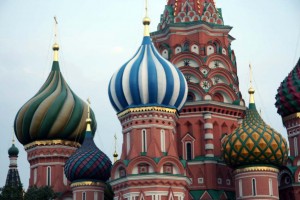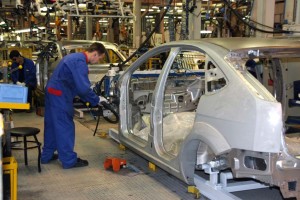Eager to expand sales in emerging markets, Ford Motor Co. has announced a 50/50 joint venture with Sollers, one of Russia’s leading automotive companies.
New of the proposed deal — which will involve the production and distribution of Ford passenger cars and light-duty commercial vehicles – followed shortly after Sollers announced it would not complete a partnership under negotiations with the Italian automaker, Fiat SpA.
“We are delighted to be taking this next step for Ford, in Russia, with our proposed partner, Sollers,” said Stephen Odell, chairman and CEO, Ford of Europe.
“This is a great opportunity, and will provide Ford customers in Russia with more products and better service,” said Odell, adding “It also will help to strengthen the Russian automotive industry and its local supply base.”
In 2002, Ford became the first foreign auto manufacturer to start producing cars in Russia, and since then it has built a solid base in the country. But the joint venture with Sollers reflects a broader industry trend.
“International (manufacturers) are pushing their localization efforts forward in Russia, spurred partly by growth trends and partly by government regulations. We expect this to continue,” said Vladislav Boutenko, the head of the Boston Consulting Group’s Moscow office.”
Sollers, the second largest producer of passenger and light commercial vehicles in Russia, has considerable experience in the Russian automotive industry. It will support the proposed joint venture through its manufacturing capabilities, knowledge of the Russian market, experience in distribution and through its ties with the Russian supply base, Ford officials said.
“We believe the partnership will benefit from blending Ford’s distribution channels with Sollers’ manufacturing plants and local experience and connections,” echoed Vadim Shvetsov, general director of Sollers.
While it is not clear what the start-up costs will be, analysts expect Ford will benefit from an increased presence in the expanding Russian auto market, just as it begins to recover from the global economic downturn. The Russian market fell by roughly half between 2007 and 2009, but is now rebounding at one of the fastest rates of almost any of the so-called BRIC, or Brazil-Russia-India-China, markets.
“The Russian auto market,” said Efraim Levy, Standard & Poors automotive analyst, “will exceed Germany’s large market before decade-end.”
Meanwhile, a new study by the Boston Consulting Group stated, “We expect the market to regain pre-crisis volumes of about 3 million units by 2013 and to reach around 3.5 million in 2015 and about 4 million in 2020, becoming the sixth-largest global market, up from tenth currently. Over the next 5 years, market growth will continue to grow at an 8-14 percent compound annual rate.”
That may be great for Ford, but bad news for Fiat – and U.S. ally Chrysler — which know has to come up with an alternative way to penetrate the Russian market. Fiat and Sollers a year ago announced plans to build a factory that would have capacity to produce 500,000 vehicles a year by 2016, financing it with $3.3 billion in Russian government-subsidized loans.
Fiat previously missed out on another opportunity to enter the heart of the old Soviet union when, in 2007, it lost a bidding war to Renault for a stake in Russia’s largest automaker, Avtovaz.
“We are inspired by the opportunity to work with Ford,” said Sollers’ Shvestov. “We are confident that our mutual efforts (will result in) a leading position for the future joint venture company on the Russian market,” Shvetsov said.
Paul A. Eisenstein contributed to this report.


